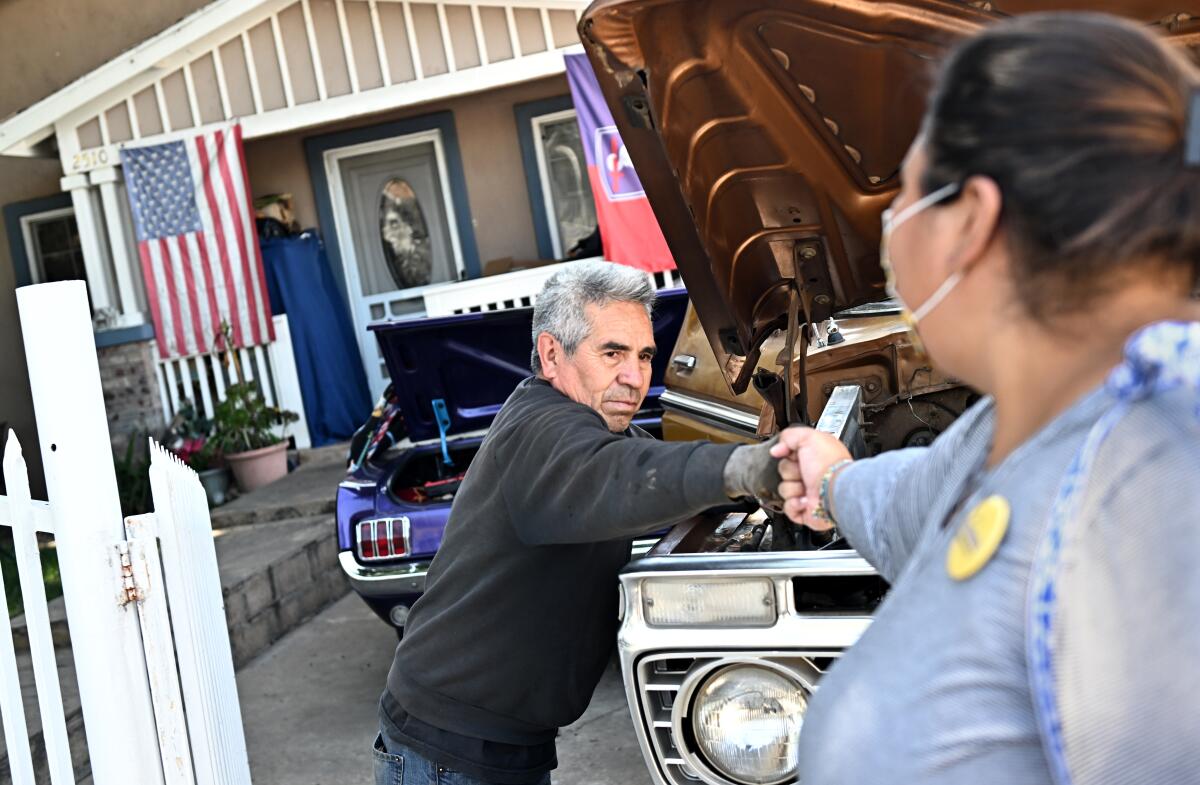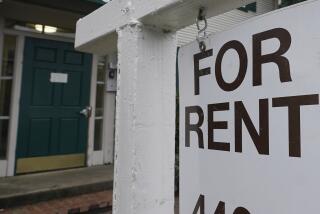L.A. is looking to buy 124 apartments in Chinatown. But will every tenant get to stay?

For more than two years, tenant advocates have demanded that the Los Angeles City Council purchase an apartment building in Chinatown, saying such a move would spare dozens of families from enormous rent hikes.
The best way to keep the residents of Hillside Villa from being pushed out, those activists said, is to have city leaders use the power of eminent domain to force the building’s owner to sell.
But for some inside the 124-unit building, there could be a downside to that transaction. Tenants who earn too much, and do not meet certain income restrictions once the building is publicly owned, could be forced to move, receiving relocation payments on their way out, city officials acknowledged this week.
Ann Sewill, general manager of the city’s housing department, said she does not know yet how many households, if any, would face relocation. She said it’s also possible that some tenants could be forced to move out temporarily while the building undergoes repairs.
Los Angeles City Councilman Gil Cedillo wants the city to use federal coronavirus relief funds to keep tenants in Chinatown from losing their homes as their landlord plans large rent hikes.
The city’s most recent estimate for tenant relocation at Hillside Villa, both temporary and permanent, was placed at more than $1.7 million. But housing officials won’t really know until they conduct more studies to determine what needs fixing on the property, Sewill said.
“Trying to predict temporary relocation, permanent relocation, needed repairs or appraised value is all speculation at this point,” Sewill said in an email. “The [housing department’s] recommendation is to do the work needed to find out.”
Those issues will be at play Friday, when the City Council is scheduled to vote to initiate the building acquisition by obtaining a fresh appraisal of Hillside Villa, then submitting an offer to the owner.
A vote to move forward would deliver a victory to Councilman Gil Cedillo, who is in a tough re-election fight and has been a subject of criticism from Chinatown tenant advocates. Cedillo described the city’s strategy as a groundbreaking way to preserve affordable housing, one that will stabilize the situation for Hillside Villa’s tenants.
“They won’t be in peril of being priced out,” he said.
Cedillo said he would also work to ensure that everyone, including those with higher incomes, can remain in the building.
The Hillside Villa proposal leaves Cedillo in an odd place politically. In the run-up to the June 7 election, he has benefited from hundreds of thousands of dollars in campaign spending by the California Apartment Assn., which represents landlords, apartment managers and developers. Yet he also has been in conflict with Hillside Villa owner Thomas Botz, who has repeatedly said he is not interested in selling.
Hillside Villa residents and tenant advocates have been pushing for the city to use eminent domain. Yet some have made clear they prefer Cedillo’s opponent, Eunisses Hernandez, who is running on a platform of stronger protections for the city’s renters.

Hernandez said Cedillo should have moved more quickly on Hillside Villa, and promised to advocate for the tenants.
“What those folks have shared with me there is that they would like to own the building,” she said. “And so I’m in support of them and their mission.”
Over the past year, protesters have gone to the homes of council members, and at least one high-level council aide, demanding action on Hillside Villa. The day City Hall reopened, tenants and activists showed up at Cedillo’s office to discuss the issue.
The push to have the city acquire Hillside Villa was launched at City Hall in 2020, after the building’s tenants received notices saying their rent would double or even triple. Under an agreement with the city, those rents had been kept artificially low for decades. But the restrictions began expiring, freeing the owner to seek much higher, market-rate prices.
The City Council voted last year to begin searching for the money to acquire the building, constructed in 1989. In a report released this month, housing officials said at least 85% of the building’s households reported making less than 80% of area median income, which is about $85,000 for a three-person household, making it easier for the city to secure financing.
Jacob Woocher, an organizer with the Hillside Villa Tenants Assn., said his group conducted its own survey and found that an even greater percentage — 113 households — were low-income. “None of us are aware of any tenants that are over-income,” he said in an email, adding that there “might be some that moved in recently.”
Get the lowdown on L.A. politics
Sign up for our L.A. City Hall newsletter to get weekly insights, scoops and analysis.
You may occasionally receive promotional content from the Los Angeles Times.
Hillside Villa resident Rene Alexzander said Wednesday that he welcomes the city’s plan to purchase the building. He said his family received a notice saying their rent will go from $1,420 to $2,660 next month.
“This has been a three-year battle with the owner of the property,” he said. “Our hopes are high.”
How much the building will ultimately cost remains unresolved. Housing officials prepared initial estimates last year showing that a purchase and rehabilitation of the property would consume nearly $60 million.
In a letter sent Monday to the council, a lawyer for the building’s owner asserted that those costs are more likely to exceed $90 million — a figure he called “beyond wasteful.”
Under the housing department’s proposal, Sewill said, the city would purchase Hillside Villa, then resell it to the Housing Authority of the City Los Angeles. That agency can supply the building with federal Section 8 vouchers more easily once it owns the property.
Once the housing authority owns the building, the vast majority of the units would receive federal Section 8 vouchers, which would help tenants cover the rent, Sewill said.
Michael Leifer, the owner’s lawyer, countered that residents in 71 of the building’s 124 units already rely on Section 8 vouchers. Another 16 units are either vacant or occupied by people currently paying market-rate rents, he said.
That leaves 37 households that need financial help, Leifer said. In an interview, he called on the city to provide those tenants with Section 8 vouchers.
“If people are eligible for Section 8, they should get Section 8, and they would be welcomed,” he said. “And the city doesn’t have to spend nearly $100 million and displace anybody.”
Sewill said the type of Section 8 voucher described by Leifer already has a waiting list that numbers into the thousands. Having the housing authority own the building outright, she said, would allow that agency to access a different type of Section 8 vouchers for Hillside Villa.
Sewill said her department will report back to the council once they receive a response from the landlord.
Woocher, the tenant advocate, said he believes Hillside Villa tenants are at risk of eviction unless the city acts. “We don’t think that long term he wants to keep Section 8 tenants,” he said.
Leifer said that assertion is incorrect.
Hillside Villa “is a Section 8 welcoming property,” he said, “and has been for decades.”
More to Read
Sign up for Essential California
The most important California stories and recommendations in your inbox every morning.
You may occasionally receive promotional content from the Los Angeles Times.












